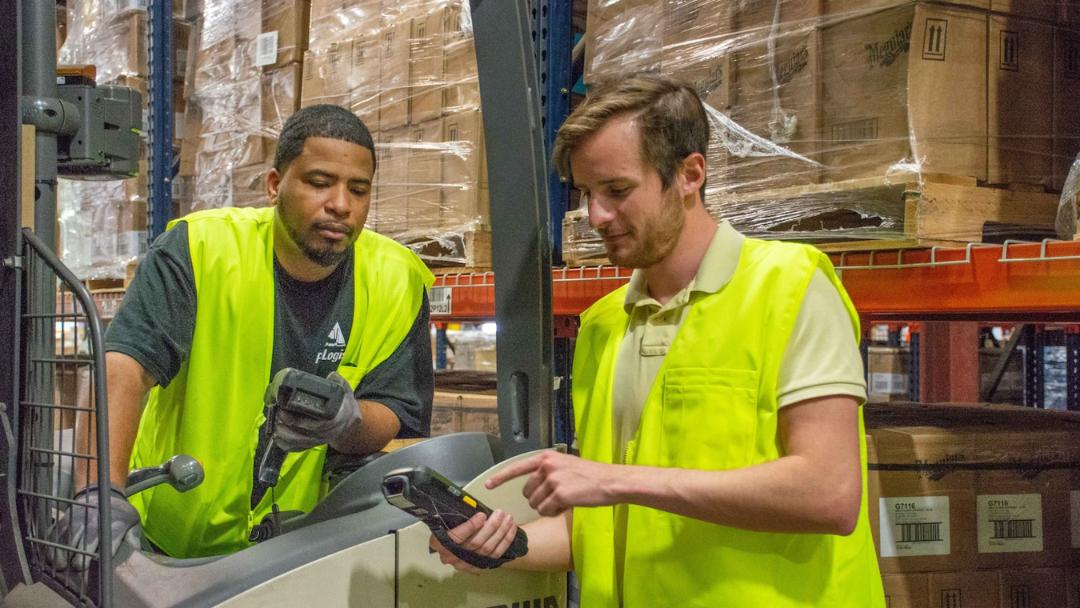How to use analytics for your workforce
Data analytics are invaluable in maximizing productivity and efficiency, but only 13% of organizations say that their data strategy is a key part of their corporate strategy, per Hewlett-Packard Enterprise. Most companies are not using data and workforce analytics effectively, even though they recognize its importance. This could be because of a lack of resources or analytical skills.
If you’ve ever wondered how to overcome roadblocks that are preventing your organization from harnessing the power of data, read on. You’ll discover more about workforce analytics and strategies to optimize team performance and business results with data-driven insights.
Workforce analytics explained
Workforce analytics involve gathering workforce data from internal and external sources, then analyzing and converting these findings into actionable insights. By leveraging data and statistical models, teams can assess employee-related information and performance more efficiently. Unlike people analytics, workforce analytics offers a more comprehensive perspective, which is key to achieving new levels of efficiency and profitability.
In fiercely competitive business environments, data availability has the potential to unlock previously unattainable information. However, a report from LinkedIn reveals that while 71% of companies see people analytics as a high priority, only 22% are currently applying workforce analytics to meet their strategic talent objectives.
Who uses workforce analytics?
Workforce analytics finds extensive application across various sectors and roles within organizations. This data can be invaluable in industries that rely heavily on skilled labor, such as technology, healthcare, finance, and manufacturing.
Here are some of the primary users of workforce analytics within organizations:
- HR departments: HR teams represent the main users of workforce analytics. They leverage this information to optimize recruitment, refine retention strategies, and support talent development.
- Managers: Organizational leaders at all levels can use workforce analytics to inform their decisions on employee performance, skill development, and resource allocation.
- Executives and key decision-makers: These individuals rely on analytics to align workforce strategies with overarching business objectives.
- Operations and finance departments: Equipped with data, operations and finance teams can enhance workforce productivity and manage costs effectively.
How to utilize analytics for your workforce
There are several types of workforce analytics for organizations to consider, from employee engagement, productivity management, and technology management to workforce planning, activity monitoring, and labor cost analysis. However, all of these data types can be grouped into three categories: recruitment, retention, and talent management.
Workforce analytics software provides opportunities to revolutionize recruitment, for instance, by automating resume scanning, completing background checks, and matching candidates with existing talent. For retention, analytics can track under-recognized high performers’ compensation rates, observe productivity-related behaviors, and even detect early signs of job dissatisfaction.. As for talent management, workforce analytics may be beneficial for establishing performance benchmarks, supporting development, and revealing skills gaps.
Here are four steps to follow to leverage workforce analytics for your organization:
- Establish the workforce problem or question: Recognize the exact problem your team is trying to solve, from minimizing turnover rates to addressing organizational skills gaps. This will help you determine the data and statistical models that are required.
- Determine information needed: Identify the information that your managers or executives will need to adequately address the issue or problem and make informed decisions. In other words, what should the analysis be reporting on?
- Set a benchmark or goal: Establishing a benchmark or objective for the problem involves determining your specified KPIs and ensuring there are historical data or standard benchmarks available for comparison with the collected data.
- Decide how to analyze and report the data: Determine which levels or relationships to assess and analyze, whether that be across various departments or respective departmental benchmarks.
A guide to leveraging workforce analytics effectively in your business
Raw data on its own has no meaning and can even be a time-waster for valuable team members if the information isn’t interpreted effectively. To harness the full potential of workforce analytics, here are strategies for a comprehensive and elevated process:
Define clear objectives
According to the Phoenix Business Journal, only 51% of companies even attempt to develop aligned goals, and among those, only 6% regularly revisit their objectives. Establishing specific goals in line with business needs and outlining what insights your team aims to gain through analytics is imperative to leverage data effectively, whether it’s for optimizing hiring, improving retention, or enhancing performance.
Ensure data quality and integration
To ensure accuracy and consistency, you’ll need to audit existing data sources. Your organization can streamline integration by implementing standardized data collection methods across platforms for HR information systems and performance reviews. For the best data maintenance long-term, you can:
- Regularly clean and update datasets.
- Employ data validation techniques to identify and fix inconsistencies or errors.
- Consider investing in data management systems for better organization and accessibility.
Invest in talent
Developing a skilled analytics team in-house or collaborating with data experts to interpret information is a critical step in using workforce analytics. Promote upskilling by conducting workshops or training to familiarize team members with analytics tools and methodologies. This might include opportunities for certifications in analytics or ongoing learning to ensure they’re prepared to fully understand and interpret data.
Continuously assess and improve
Be sure to implement agile analytics methodologies that allow for continuous adjustments. Organizations can establish regular review periods to assess the effectiveness of their current analytics strategies. This often means improving feedback loops and fostering a culture of flexibility, so teams are prepared to adapt to trends and changing priorities.
Use actionable insights and communicate them effectively
Put data to use by translating complex findings into actionable steps and prioritizing them based on their potential impact. This information can be used to develop reports or dashboards tailored to stakeholders’ needs. It can also be leveraged to facilitate dialogue within the organizations for more informed decision-making.
The benefits of workforce analytics
By introducing workforce analytics and leveraging insights, organizations enjoy benefits such as:
- Better decision-making, as data-driven decisions help refine recruitment, retention, and performance strategies.
- A stronger culture where team leaders feel empowered to improve the employee experience and retain top talent.
- Cost efficiency, as operations are streamlined and inefficiencies are pinpointed and eliminated.
- Clearly defined organizational needs so recruitment meets talent requirements.
- Boosted skill development with an improved ability to identify gaps and provided training.
- Maximized use of organizational technology to improve business results.
Unlocking efficiency with Employbridge’s analytics-driven solutions
If introducing workforce analytics to your organization seems daunting, Employbridge is here to help. Employbridge is a staffing partner that champions talent acquisition through innovative, analytics-driven solutions. Our approach is designed to unlock unparalleled efficiency and yield higher-quality matches to accelerate placement rates and time-to-fill.
By partnering with Employbridge, your business can take advantage of tailored strategies, innovative technology, and free upskilling programs to shape a future-ready workforce. Our powerful workforce-as-a-service platform empowers you with unmatched control and access to top-tier talent.
Ready to build a more agile workforce with the help of workforce analytics?



